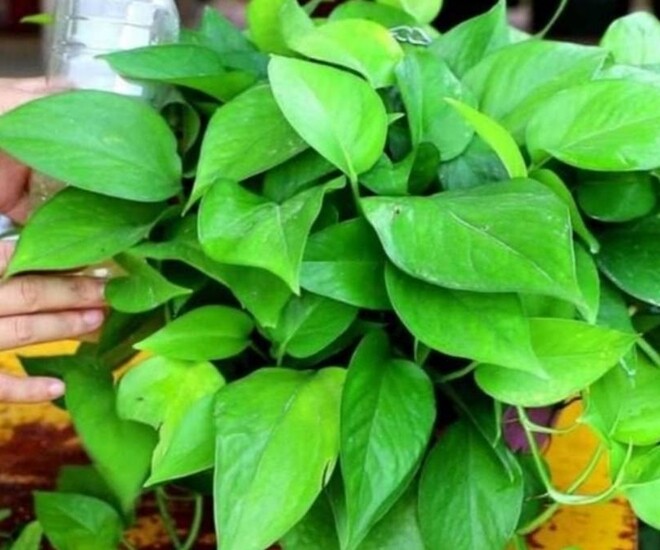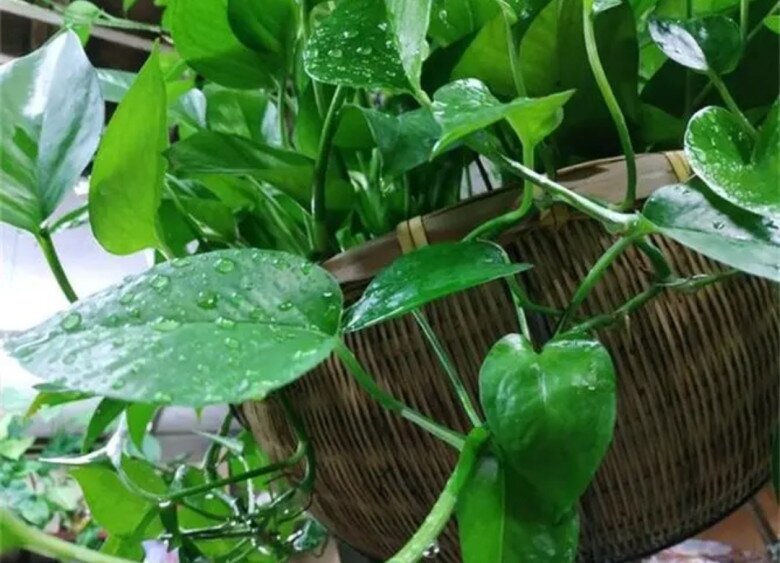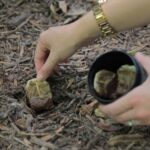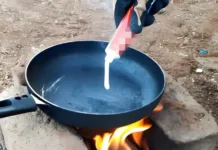Many people grow betel plants at home, but some complain that their plants don’t thrive. Even during the growing season, their plants fail to produce new branches and leaves, and the existing leaves turn yellow and lack vigor.
The main reason for this is that these gardeners only water their plants and do not fertilize them. From the time the plant is potted, it only receives water and no additional nutrients, leading to a lack of nutrition. When the nutrients in the soil are depleted, and the roots have filled the pot, the plant will weaken and struggle to grow new branches and leaves.
Therefore, when caring for your betel plant, it’s essential to provide more than just water.

1. Provide Balanced Nutrition with Fertilizer
Betel plants grown indoors don’t require frequent fertilization, but if you neglect to fertilize them for too long, the soil will become deficient in nutrients, leading to a weak and yellowing plant that fails to produce new growth.
Since betel is a foliage plant, you can use a standard balanced fertilizer. Fertilize once a month to ensure healthy growth. If using a quick-release fertilizer (liquid or granular chemical fertilizer), apply a small amount to the pot, avoiding over-fertilization, which can burn the roots and cause leaf scorch.
For slow-release fertilizers, apply once every 2-3 months. When you water, the fertilizer will gradually release nutrients, providing sufficient nourishment for the plant to produce new branches and leaves.

2. Create Your Own Liquid Organic Fertilizer
If you don’t have fertilizer on hand, you can make your own liquid organic fertilizer at home by fermenting rice water, expired milk, or other similar ingredients in a sealed plastic container for 1-2 months. Then, dilute it with clean water and use it to water your plants. Not only will your betel plant benefit from this, but other houseplants will thrive as well.
If you find the fermented rice water pungent, you can add fruit peels such as watermelon, banana, orange, or pomelo to the mixture. After fermentation, this fertilizer will have a pleasant, fruity aroma and will be highly beneficial to your betel plant.

3. Use a General-Purpose Liquid Fertilizer
If you have many indoor plants and are concerned about using organic fertilizers, you can opt for a general-purpose liquid fertilizer designed for houseplants. These fertilizers are convenient, easy to use, and readily absorbed by the roots, promoting vigorous growth and continuous production of new branches and leaves.
When you notice your betel plant slowing down, add a few drops of this fertilizer to your watering can. In a short time, you’ll see leaves becoming lush and vibrant, with new buds and branches emerging.
How to Grow American Yellow Lemon Trees
The Meyer lemon tree, a hybrid native to China, is a popular choice for home gardeners due to its ease of cultivation and abundant fruit production. Growing your own Meyer lemon tree can be a rewarding experience, and with the right care and attention, you can enjoy a plentiful harvest of juicy, aromatic lemons. This guide will take you through the simple steps to cultivate and nurture your very own Meyer lemon tree, ensuring a vibrant and productive addition to your garden.
The Magic of Used Tea Bags: 7 Tips to Get the Most Out of Your Brew
Introducing a new way to think about your used tea bags: don’t discard them, unlock their potential! Those humble tea leaves have more to give than just a single brew. With a little creativity, you can extract further value from these unassuming pouches of flavor. It’s time to discover the hidden benefits lurking in your trash.






































